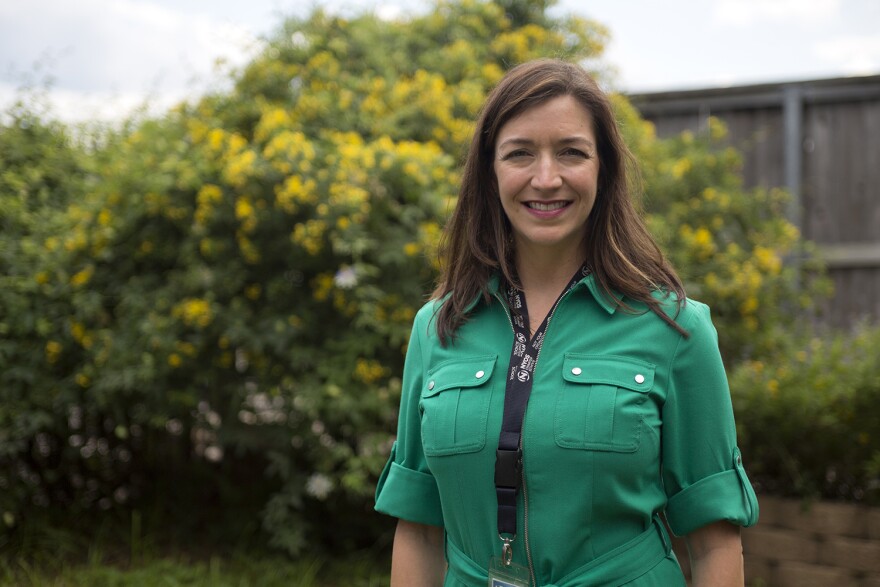It’s the end of the school day at the Not Your Ordinary School in North Austin and students in Melissa Hefner’s fourth grade class are sitting in a circle.
“Today what I’d like for you to share is something you did with a learning partner," Hefner says. "With a learning partner I worked on math power points," one student responded.
This charter school opened 18 years ago. Today, it has 950 students in kindergarten through 12th grade. Kathleen Zimmermann is the school’s executive director. She says parents are attracted to the small class sizes at NYOS.
“We have some innovations, too, like a year-round calendar and looping where kids keep the same teacher for multiple years to help build those relationships between students and teachers," she says. "And that kind of connection and closeness, helping teachers to understand what students need specifically is really is a draw for parents.”

More parents want in. Zimmermann says there are about 3,000 kids on a waitlist to attend the school's two campuses.
Charter schools have been in Texas for 20 years now and the number of students in charter schools has grown—from around 4,000 in the mid '90s – 0.01 percent of the Texas student population – to more than 200,000 students in recent years – 4 percent.
When Texas approved the first 20 charter school licenses in 1995, it was basically an experiment: free schools from some regulations, like teacher employment contracts, and see if the teachers and schools can find new ways to teach students. Charter schools could then share those ideas with traditional public schools.
But is that actually happening?
“It’s coming more slowly than many of us had hoped, probably," says David Dunn, executive director of the Texas Charter School Association.
Dunn says there’s at least two reasons for that.
“I think it’s kind of the sort of ‘tend to my garden’ syndrome," he says. "They're so focused. Running a successful school is hard work and folks tend to get focused on ensuring that their schools are doing a good job.”
The second reason: Charter schools are trying to attract the same students as traditional public schools.
“[Traditional ISDs] view charters as competition. When a student enrolls in a charter school, the state funding is reduced by the per-pupil-funding amount, so there’s some resistance there," Dunn says.
Plus, there's nothing that requires charters and traditional school districts to share these innovative ideas.

Dunn says more public and charter schools across the state are forming partnerships, but those aren’t always welcome in traditional school districts. A few years ago, former Austin ISD Superintendent Meria Carstarphen tried to partner with a charter school to help run an elementary school in East Austin. Anti-charter school groups protested. A handful of new school board trustees who supported the plan were voted out of office, and the contract was eventually canceled.
Huriya Jabbar is an education policy professor at UT Austin who studies charter schools. She says when charters are innovative, it’s usually not around teaching and learning, but other, more structural, changes.
"So, teachers that are without a union contract or longer school days or using technology in the classroom – these innovations seem to be at the level of governance and not curriculum," she says.
She says these ideas are not as easy to translate to traditional public schools.
There’s another wrinkle. In the time since the state approved charter schools, lawmakers put more emphasis on test-based accountability, which affected both traditional schools and charters.
“Charters have been increasingly focused on improving test scores, and there’s a concern that might have shifted priorities from innovation to meeting requirements," Jabbar says.
In the end, charter school innovation was intended to improve student performance. Yet nationaland state studies find it’s hasn’t made a huge difference.
According to a review of Texas student data during the 2012-2013 school year, students at charter schools are no more, or no less, successful than students at traditional public schools. They score the same on standardized tests and graduation rates are the same in both traditional public schools and charters.
“Clearly charters are not a silver bullet or standalone solution to the problem of unequal educational opportunity in this country," Jabbar says.
David Dunn with the Texas Charter School Association agrees that charter students should be performing better than they are.
"Hopefully, as charter school performance increases, school districts will continue to react and adapt and continue to drive increased performance in traditional ISDs," Dunn says.
In the meantime, the Texas Charter School Association has developed a self-improvement system to help charter schools improve statewide.




